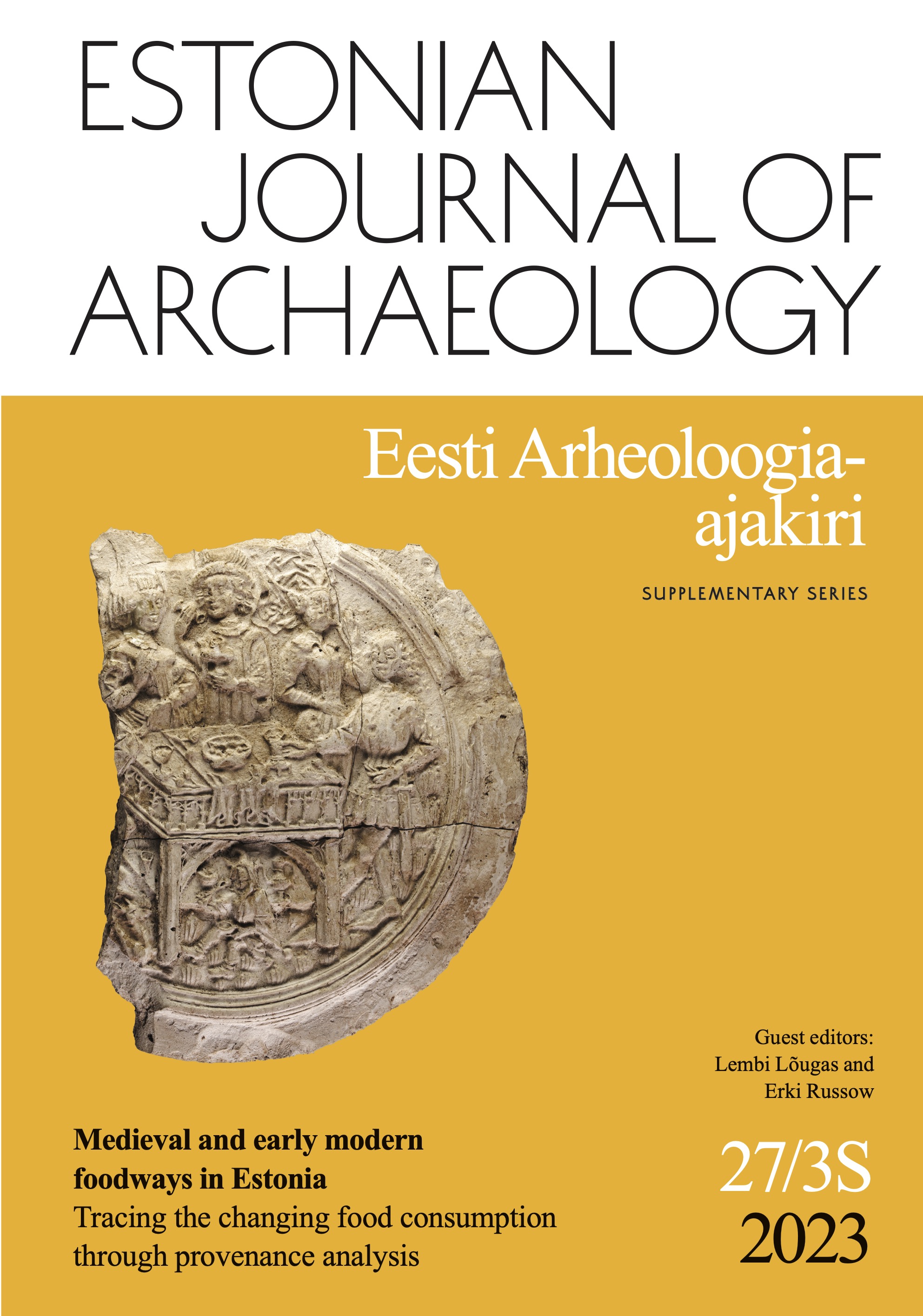Changes in the exploitation and consumption of seafood vs freshwater resources in medieval and early modern Estonia
Changes in the exploitation and consumption of seafood vs freshwater resources in medieval and early modern Estonia
Author(s): Lembi Lõugas, Ülle Aguraiuja-LättiSubject(s): History, Archaeology, Cultural history, Middle Ages
Published by: Teaduste Akadeemia Kirjastus
Keywords: provenance analysis; seafood; stable isotopes; Middle Ages; Early Modern Period;
Summary/Abstract: This paper focuses on evaluating the changing role of seafood imports in comparison with freshwater resources in medieval and early modern Estonia, based on zooarchaeological material and provenance analyses. A secondary aim was to find evidence of the early stages of practicing aquaculture in Estonia. The work presents the results of taxonomic and morphological analyses of the zooarchaeological material of aquatic animals, including marine and freshwater vertebrates (fish, marine mammals) and invertebrates (shellfish). These results were combined with additional evidence gained from previously published stable isotope data from the bone collagen of fish and marine mammals, allowing us to identify and investigate local and foreign resources among the medieval and early modern fish populations in Estonia. Our results show that herring and cod were the most exploited marine species during this period; however, freshwater species dominated at both coastal and inland sites. Compared to earlier periods, the remains of seals disappear almost completely from the zooarchaeological record, whereas those of oyster shells increase. Stable isotope analyses revealed the diverse habitats of consumed fish: from the Atlantic to the eastern Baltic, and from inland rivers to shallow coastal waters. Not much evidence was found of commonly farmed fish in the Estonian archaeological material.
Journal: Eesti Arheoloogia Ajakiri
- Issue Year: 27/2023
- Issue No: 3S
- Page Range: 123-143
- Page Count: 21
- Language: English

